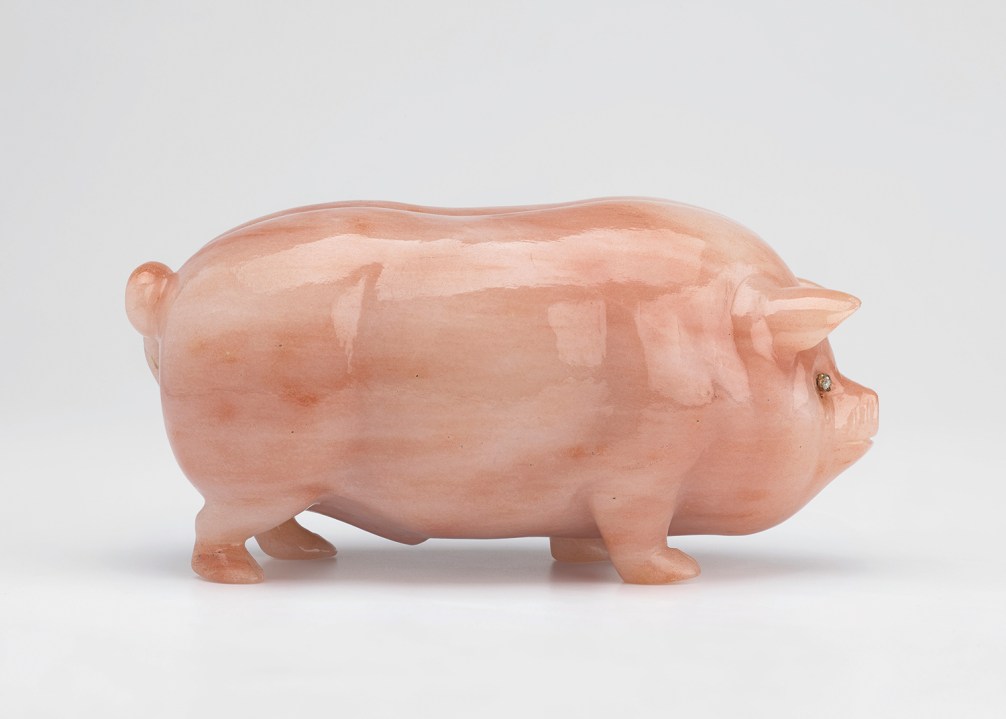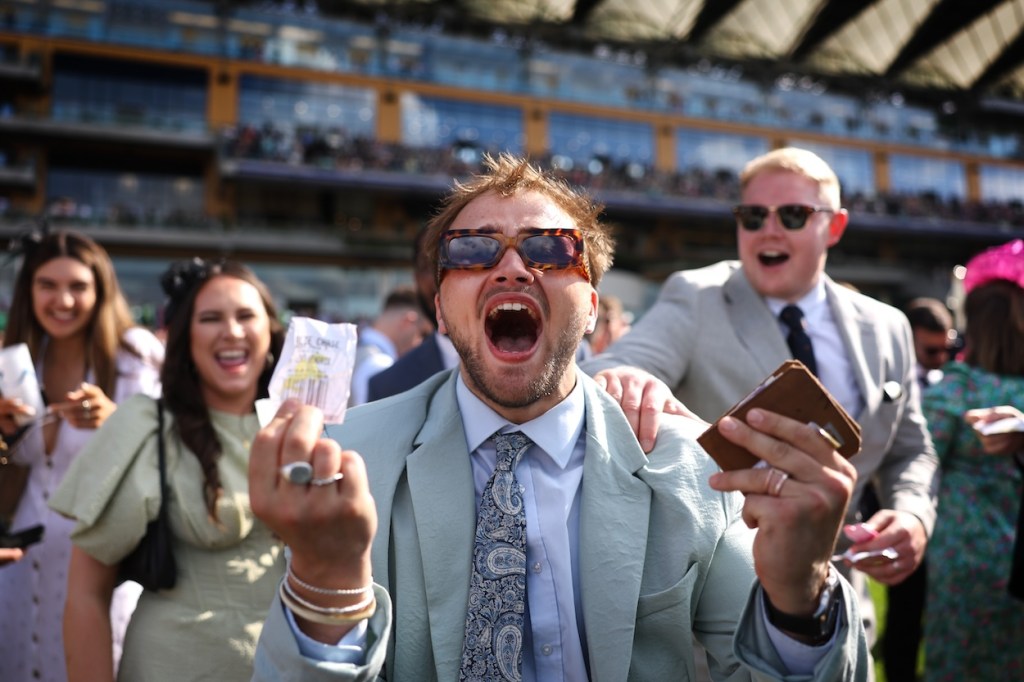
The Royal Collection Trust has had a rummage in the attic and produced a fascinating show. Displayed in the palatial gallery adjacent to Buckingham Palace, and described on headsets in the reassuring tones of Hugh Bonneville, are public tokens and personal treasures of two generations: Edward VII and Queen Alexandra, and George V and Queen Mary. Frocks, clocks and diplomatic gifts; purchases and mementoes that give the illusion that the royal family might be, after all, not so unlike us.
There’s an unusual tea set, with odd, red photos: as princess, Alexandra took family snaps and had them printed on to these porcelain teacups in 1892, more than 100 years before Moonpig. It’s all here, the strange presents one feels obliged to keep (a snuff bottle given by a Chinese diplomat, engraved with Queen Mary’s face), the hardware one just had to have (Cartier pencil case in smoky quartz), the Meissen monkey orchestra that seemed so charming at the time. Alexandra was a watercolourist and photographer (see below) and her time as an invalid was spent creating lovely pictures. But the royal couple had a problem with a surfeit of stuff. The show’s curators mention that the rooms of Sandringham were ‘cluttered’ – a photograph looks borderline hoarder.

Princess Alexandra took family snaps and had them printed on to porcelain teacups 100 years before Moonpig
We all have special posters that we put up at uni, trying to establish our taste; Edward VII had a Lord Leighton hottie he picked up in Rome, from the studio of the artist, and hung it in his rooms at Frewin Hall, Oxford, while he was an undergrad at Christ Church. It’s also fun to see his fan-boy collectible from Sarah Bernhardt, a bronze copy of a bust of her as a dragon-winged chimera that she gave out to special admirers. And in a lapis-blue flash of chic, the Cartier cigarette case, a snake writhing across it, given him by his mistress Mrs Keppel.
This being England, pets and racehorses feature heavily. There’s a painting of Edward VII’s favourite terrier Caesar ‘in heroic pose’ and a large photograph of the same. When Edward died in 1910, Caesar followed the royal coffin. Vassilka, Alexandra’s champion borzoi, is here too. While other royal families ordered exquisite bibelots from Fabergé, Edward preferred miniature animals. The English royal family was known to Fabergé for their lack of extravagance, but they still opened a shop in London with an eye to patronage. The animals were modelled in wax from treasured pets and bloodstock champions at Sandringham, then carved from laboriously sourced hardstones (agate, obsidian, lapis) in St Petersburg. A tiny Norfolk sow. A pigeon. A Norfolk Black turkey with gold feet. A Sandringham Lucy (clumber spaniel) carved in chalcedony with a ruby eye. Chacun à son goût.
This is a big show, with much to take in, from jewels (the ‘Dagmar’ necklace – a gift from Alexandra’s side – that includes a copy of the enamelled century cross buried with Dagmar, Queen of Denmark, in 1212) to ceremonial paintings including Laurits Tuxen’s ‘The Marriage of George, Duke of York, with Princess Mary of Teck’ (1894), so big and lucid you feel you’re there at the Chapel Royal at St James’s Palace, under the watchful gaze of Queen Victoria, like the younger members of the royal family for so much of their lifetimes. At this point a rather sincere narrator comes on to the audioguide and invites you to practise ‘slow looking’, asking, like a yoga instructor, that you move your head in the same angle as the sitters, notice the light, the atmosphere. I want to scoff, but why not? Every object here is well chosen and worth study.
There’s a photograph of the florid Gilbert tomb at Windsor depicting Prince Albert Victor (known to his family as Eddy). It was still being perfected, 20 years after his death, aged 28, in the pneumonia pandemic of 1892. He was the heir to the throne’s eldest son. This show is a great way to refresh one’s knowledge of the period, through pieces by Sargent, de Laszlo and Lavery. In the final room, the war dominates, Edwardian elegance turned to serious purpose with Edwin Lutyens’s cenotaph, the fashion of referring to an age by the name of its monarch substituted with interwar, war, postwar. The last item in the show is a mantel clock with a striking air of dignity. It was made by ex-servicemen – who had retrained through a scheme run by the ministry of labour – from straightened postwar materials of copper alloy and silver plate, and presented to George V and Mary, apparently at the side of the road.








Comments